When I visit Grenada in a few months I plan to explore the interior of the island and wonder if I could encounter any snakes. Snakes are really cool, as long as they’re nowhere near me. Keep reading and you’ll learn about the snakes that may slither across your path while on Grenada.
Are there snakes on Grenada? Yes, there are snakes on Grenada. Four species live on the island including:
- Grenada Bank tree boa
- Cribo
- Barbour’s tropical racer
- Grenada Bank Blindsnake
OK, so there are snakes on Grenada. I don’t know about you, but knowing they are on the island is not enough. I need to know more like where the snakes hang out, what they look like and whether or not they are venomous.
By the way, if you’re wondering if Grenada is even worth visiting, check out my article 20 Reasons Why Grenada is Totally Worth It.
And for the ophidiophiles out there (you know who you snake lovers are) you probably want to know even more such as what they eat and how long they are. I got you covered too.
First for the good news. The snakes that call Grenada their home are not venomous or dangerous to humans. What a relief! With that out of the way, let’s keep going…


Meet the snakes of Grenada
As mentioned, there are four species of snakes on Grenada including the Grenada Bank tree boa, cribo, Barbour’s tropical racer, and the Grenada Bank blindsnake.
Three of the four snakes are officially endangered so it’s not surprising that sightings are rare. This suits the locals just fine because they are terrified of snakes – even though they’ve been advised that the snakes are not venomous to humans.
Although I’m not a fan of snakes, knowing they are dwindling makes me a little sad.
Grenada Bank tree boa (Corallus grenadensis)
Known as “serpent” to the locals, the Grenada Bank tree boa is a non-venomous snake that can be found in a wide range of habitats throughout the island including in the trees of the forest, the dry shrublands and in the wet and humid rainforest.
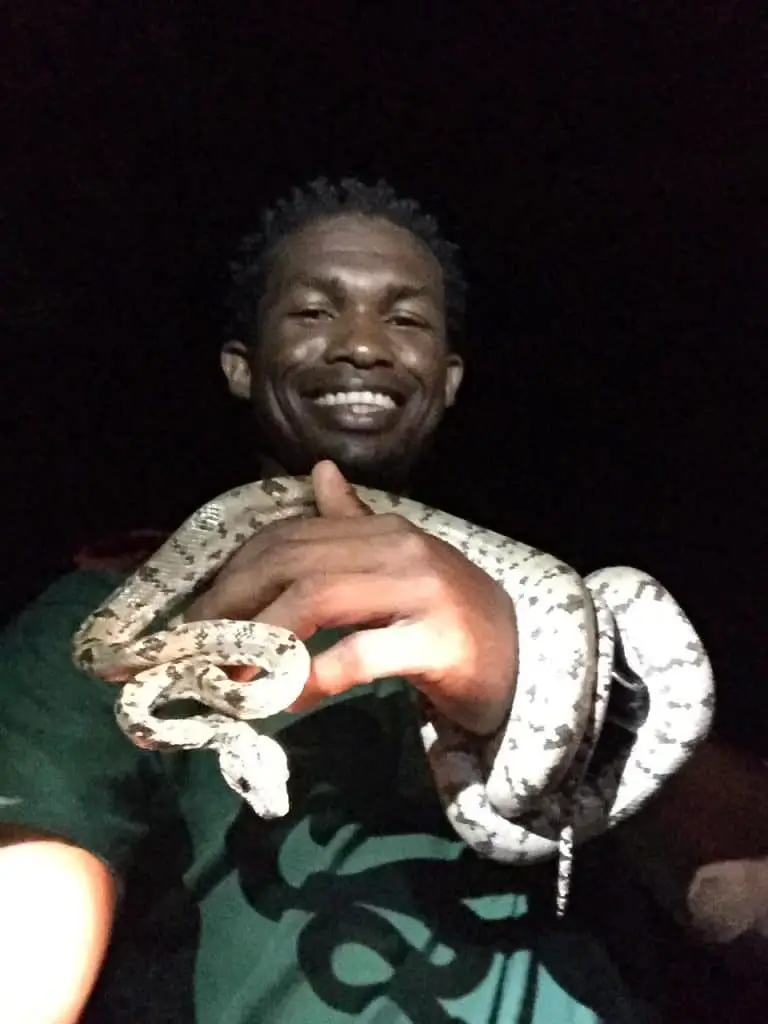
Also known as the Grenada Bank tree boa, the snake is endemic to Grenada and some of the other Grenadine islands. It’s also the largest snake on Grenada. Young tree boas are about 30 inches and according to Dr. Carter’s (veterinarian on Grenada) research, adult female tree boas can easily reach 6′ in length and weigh between 2-4 pounds.

In general, more Grenada Bank tree boas can be found in the mid to lower elevations and less in the higher elevations.
According to the Grenada Forestry Department’s Facebook page, “Individuals of all sizes are most frequently encountered in sections of continuous vegetation (natural or man-made), and also on edge habitat where trees meet open spaces.”
The tree boas are viviparous, meaning they give birth to live young. The babies are usually 1′ in length.
The colors of this creature vary from yellow to brown to gray.
- The yellow tree boa is typically found in the low, dry, scrub areas that receive more sunlight.
- Brown tree boas are generally found at higher elevations
This snake is a nocturnal species and an active forager moving slowly through bushes and trees to find their next meal.
The babies eat crickets and moths, the smaller snakes prey on lizards while the larger tree boas commonly prey on mouse possums, opossum, bats, lizards, rats, and birds.
The Grenada Bank tree boa approaches its prey in a very stealth-like manner moving at less than ½ inch per minute as it approaches its prey. Once it’s in close proximity of its target, it will strike.
Adults can strike from as much as 2′ away, and usually, catch bats in mid-air!
According to Grenada’s Ministry of Agriculture, Lands, Forestry, Fisheries and Environment, the Grenada Bank tree boa is endangered.
Cribo (Clelia clelia)
The cribo also goes by the name of mussurana or musurana and is a close relative of the indigo snake. It favors dense, ground-level vegetation, especially if it’s close to water.
This snake can be found on Grenada as well as the other Windward Islands and South American countries.
Young cribo are light pink but become lead-blue as they grow to adulthood and can reach lengths of 5-8’. It’s been described as looking much like an eel.
Cribo prey on other snakes, rodents and other small mammals. They’re immune to the venom of other snakes (except the coral snake) and find their rear fangs pretty handy for demobilizing their snake victims by grasping the head and pushing it into its mouth. Once demobilized, the cribo wraps itself around the victim and squeezes until it’s dead. The victim is then ingested by the cribo
Although the cribo’s fangs contain venom, don’t worry, they are not dangerous to humans. In fact, like the other three snakes on Grenada, they’re rarely ever sighted.
According to Grenada’s Ministry of Agriculture, Lands, Forestry, Fisheries and Environment, the cribo is critically endangered. It is extremely unlikely you would see this snake on your visit.
Barbour’s tropical racer (Mastigodryas bruesi)
The 3rd snake that calls Grenada home is Barbour’s tropical racer also referred to as Boddaert’s tree snake or grass snake. It’s native to Grenada and St. Vincent and the Grenadines and is typically 3-4 feet long.
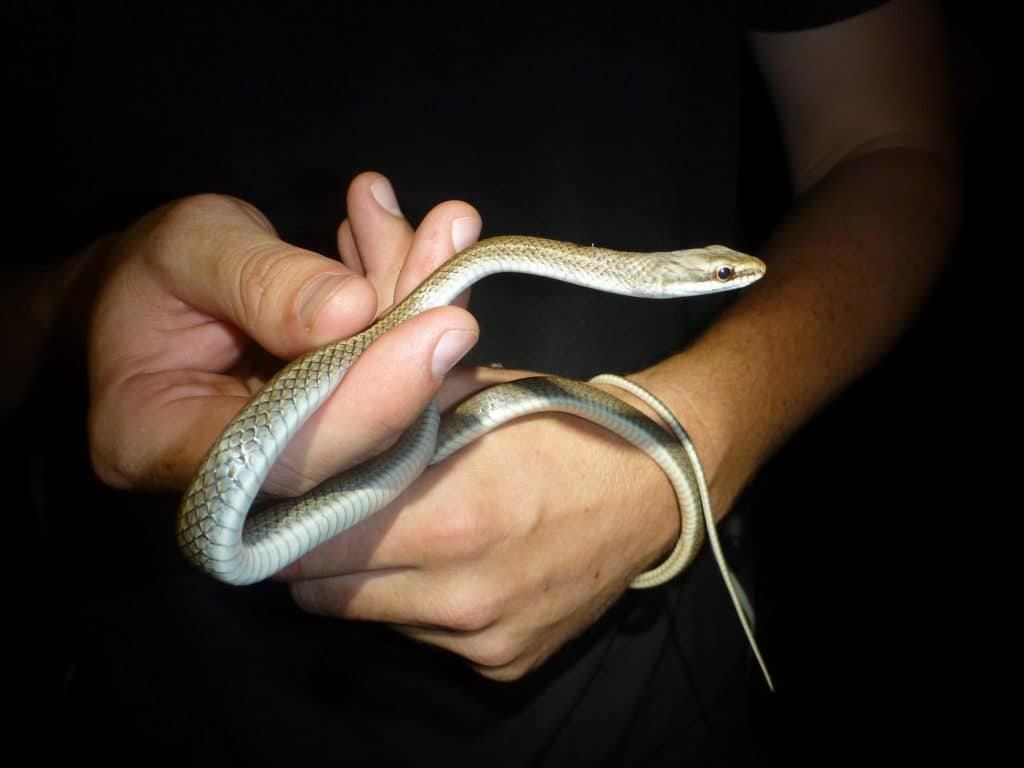
This snake can be found in dry, shrublike environments on the ground and in bushes. They sometimes sleep 40′ in the trees.
Colorwise, it’s blue/gray to brown with light stripes and a white belly.
Barbour’s tropical racers are strictly diurnal (are active and hunt during the day) and like to feed on frogs and lizards.
Grenada’s Ministry of Agriculture, Lands, Forestry, Fisheries and Environment has also listed the racer as endangered.
Grenada Bank Blindsnake (Typhlops tasymicris)
The Grenada Bank blindsnake also goes by several other names including burrowing snake, and Grenada worm. And, it really is blind! Poor thing 🙁 (Oh man, this snake has me feeling sorry for it. That ain’t right!).
This little guy is only about 7 inches long. In addition to being tiny, it’s also very rare.
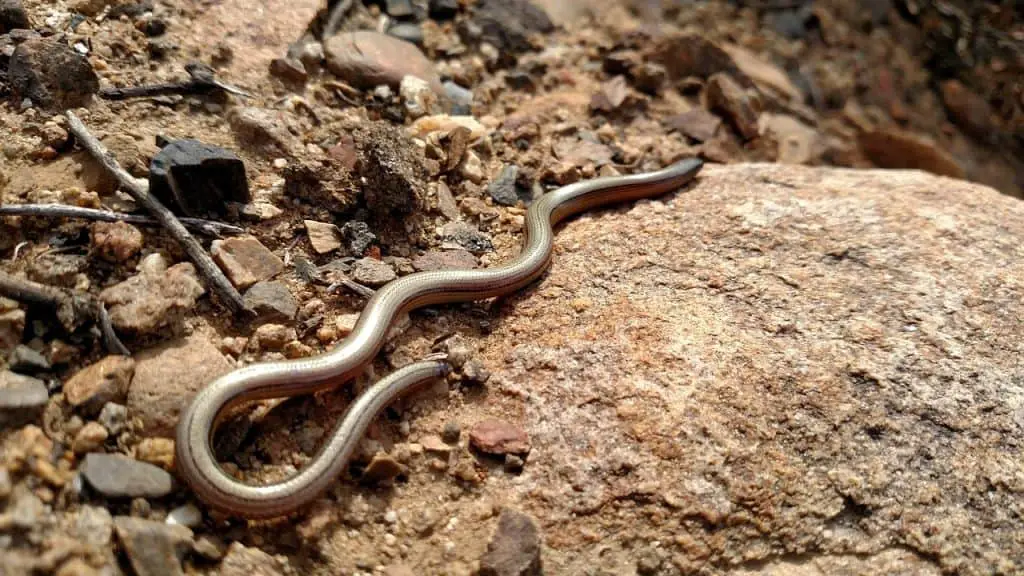
It has light lines on its back but other than that, it’s unpigmented like a worm, hence the name.
On Grenada, the blindsnake is primarily found in low areas and mostly seen in St. David parish. They feed on earthworms.
Well, we know there’s no reason to avoid Grenada because of snakes. But what about insects? Be sure to check out my article Don’t Let These Insects Ruin Your Trip to Grenada so when you do make the trek you’re fully prepared!
Overview of Snakes on Grenada
The table below summarizes key facts about the 4 species of snakes that exist in Grenada.
| Name | Size | Color | Prey |
| Grenada Bank tree boa | 4’-6′ | Yellow (when found in the low, scrub areas) Brown (when found at higher elevations) | mouse possums, opossum, bats, lizards, rats, and birds |
| Cribo | 5′-8’ | lead-blue | Other snakes, rodents, and small mammals |
| Barbour’s tropical racer | 3-4’ | blue/gray to brown with light stripes | Frogs and lizards |
| Grenada Bank Blindsnake | 7” | Wormlike with light lines | earthworms |
What if I get bit by a snake on Grenada?
None of the snakes on Grenada are dangerous to humans. However, that doesn’t mean they won’t bite.
As I mentioned earlier, sightings of any snake on the island are very rare. If they are seen, left alone they pose no harm. If you harass it, it could bite. If you don’t want to get bit, leave it alone (duh).
A snakebite from the Grenada Bank tree boa, cribo, or Barbour’s tropical racer may cause swelling, itching or in extreme cases an infection but it will not kill you. See medical assistance if you are concerned about a bite.
Are there sea snakes around Grenada?
According to Bioscience.com, there are no sea snakes around Grenada. They published a paper that refers to the challenge sea snakes face just getting to the Caribbean sea by way of the Atlantic Ocean. You can read more about it in the BioScience paper titled “Why Are There No Sea Snakes in the Atlantic?“.
That said, I’ve learned of at least one testimonial to the contrary. So, if you encounter a sea snake while scuba diving or snorkeling in the Caribbean, for the love of God, give them their space!
There you have it. There are 4 species of snakes on Grenada – none of which are dangerous to humans so there’s no reason to cancel your trip, or avoid Grenada if you plan on visiting one day. For me, the Grenada vacation is still “on”!
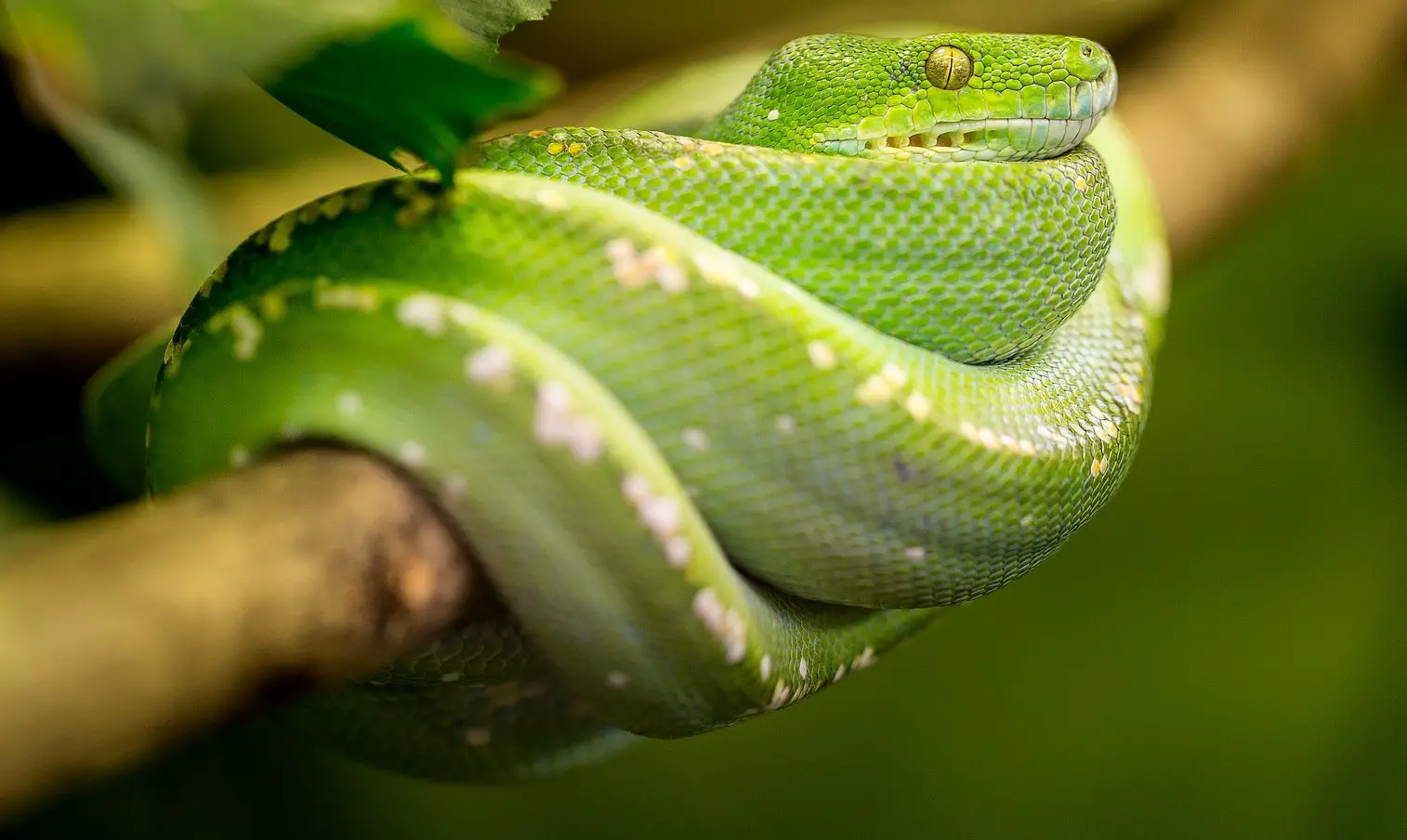

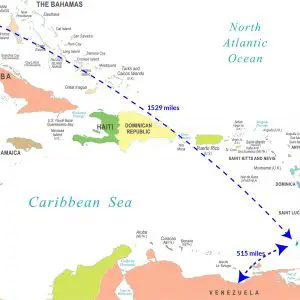

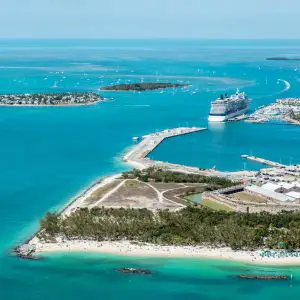

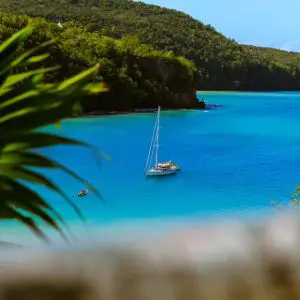


I lived in Grenada for two years, St. Vincent for 5 months. I snorkeled extensively in the coastal areas around both islands and there are most definitely sea snakes there. I, and my fellow snorkelers, saw them all the time. They usually swam near the bottom so you would see them below you but they rise to the surface to breath. They never seemed interested in humans at all but we gave them a wide berth when they rose to breath. Contrary to what this article says there certainly are sea snakes in the Caribbean.
Edward, thank you for your comment. I believe you and your fellow snorkelers encountered some sea snakes in the waters around Grenada! I think it’s important to consider real testimonials in my articles so updated it to indicate there have been actual sea snake sightings. I appreciate that you took the time to comment. Have a great day!
Thanks for the information. I am petrified of snakes. so now I am more prepared if I see a snake while I am swimming.
Good afternoon. I went for a swim at Annandale Falls today. I saw a pale snake in the shallows downstream from the falls. It was probably about 18-20” in length. I’m wondering what kind of snake it is. I don’t see any other snake like that on line. I lightly touched it on the tail end to be sure it wasn’t a root or branch, and, yes, it did move slowly away. I took a very short video- wasn’t the best of quality due to the reflection on the water. If I had a way to send it…
Anyway, it was a refreshing swim!
oh dear lord, now I have to worry about something other than sharks when I’m snokeling!